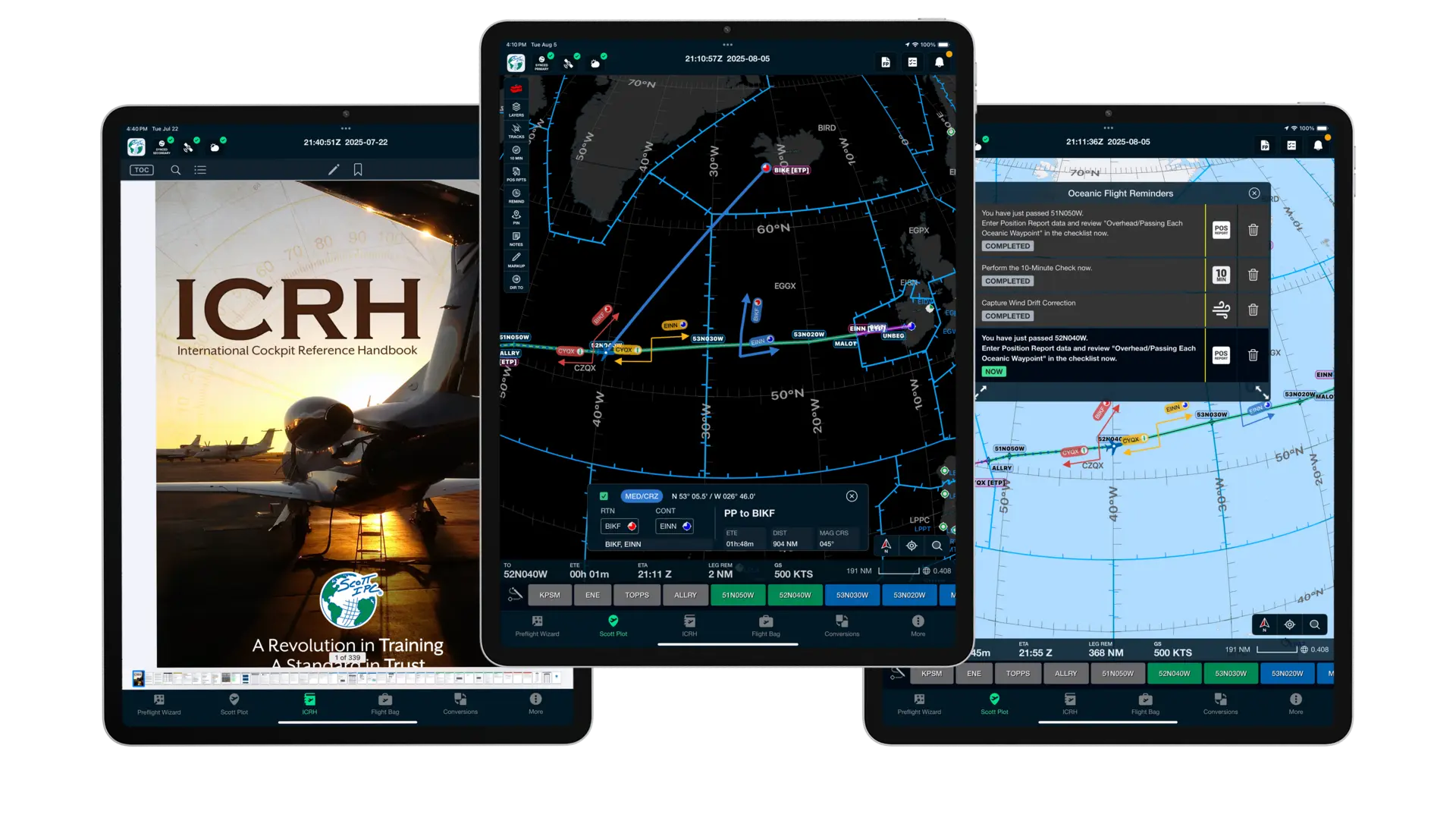UPDATE ON PBCS REQUIREMENTS: Today 29 Mar 2018 is the deadline for the PBCS capability requirement that allows ATC to provide aircraft with reduced separations based on flight plan entries. Entries for block 10A are now required to show your Required Communication Performance. U.S. Part 91 operators have until 30 Sep 2018 to have the A056 approval reflect the PBCS capabilities.
P1 indicates CPDLC RCP400
P2 indicates CPDLC RCP 240 (for 30/30 RNP 4)
P3 indicates SATVOICE RCP400 (for ATC intervention if not able to perform using RCP240)
RCP400 would be used for controller intervention capability supporting separation where separations greater than 30/30 cannot be applied or cannot be applied to a particular aircraft. Future plans will be for those aircraft to use RCP400 using SATVOICE or HF Data Link for comms. For aircraft not equipped for RCP240 ATC cannot apply Performance-Based Separations.
Those being: 30 NM Longitudinal and Lateral Separations, and 5 min Longitudinal Separation (same Track). There in lies the crux of the problem. So how does ATC know what to give you for separation? The P's in block 10. ATC has been tracking performance of aircraft for a number of years now and starting 29 March 2018 they will base the aircraft separation purely on these flight plan entries. For U.S. Part 91 operators, this requirement has been pushed to 30 Sep 2018, but the operational results are the same. If the A056 has not been updated, then do not place P2 in the flight plan.
There is a Performance-Based Communication and Surveillance monitoring program in place that will report if an operator cannot meet RCP 240 and RSP180 standards. They look for things like failures, delayed messages, and conformity. The FAA along with ICAO gathers these monitoring results and an operator can view these results in two separate websites. Information is fed from Oakland, Anchorage, New York, Reykjavik, Shanwick and Auckland.
www.fans-cra.com allows an operator to both submit reports and view monitoring results. You must have an account with the Fans.cra.com website. The monitoring results differ from the FAA website in so much as it tells users, the percentage of required events that have been captured for both RCP240 and RSP180.
The FAA Performance Based Communication and Monitoring information on the FAA website allows an operator to view aggregate results and simply informs a user if they meet RCP240 "yes" or "no, and whether they meet RSP180 "yes" or "no". In these reports you will see whether you meet the RSP 180 and RCP240 standards for 95% of the time. It will either state YES or NO. It may state "Low Data Count" which means they do not have sufficient data for a full evaluation of performance. If your aircraft shows "Low Data Count", you may continue to utilize Datalink and still be offered RCP240 reduced separations.
The recent FAA Notice N8900.446 OpSpec/MSpec/LOA A056, Data Link Communications, gave guidance within the FAA on how to process or re-process A056 approvals for RCP and RSP.
Operators cannot receive reduced separations in the oceanic environment until the A056 has been re-issued to indicate conformance to PBCS standards, for oceanic that means RCP240 and RSP180 standards. In the U.S. that means VDL Mode 2 (tunable to multiple frequencies). If your A056 has not or will not be revised by 29 Mar 2018 (30 Sep 2018 for U.S. Private operators), then ATC cannot provide the aircraft with reduced separations. CPDLC and ADS-C may still be used but with restrictions excluding these reduced separation applications. The Datalink A056 will not expire, but operators must understand their restrictions concerning separation assignments.
For a new A056 applicant the information presented to the FAA will contain the needed information. But for current holders of A056 it seems there is a bit more work to do.
Remember it is not a matter of whether you can use CPDLC. It is a matter of reduced separations being applied to the aircraft.
1. Download the AC90-117 which gives guidance on Data Link Communications and go through it.
2. Download the A056 Compliance Guide.
3. If you currently hold an A056 approval that needs updating, go through the compliance guide and locate all the guidance that is for an existing A056 operator. The "yes" entries are for existing A056 holders.
4. If you do not have a statement of compliance in the AFM indicating conformance with the standards support the Interop Designators, Subnetworks and Aircraft Allocated Performance, then enure you do not include P2 in block 10a and SUR/RSP180 in block 18 of the ICAO flight plan. Your ability to be granted reduced separations after the above dates, will be driven from the approvals, and then from your flight plan entries.
Ramifications: You will not be able to get reduced separations based on Performance-Based Separations. For now this means no PBCS (RLatSM) Tracks FL350 to FL390 in the NAT. So if you can operate outside of the tracks with a 50NM separation then no harm, no foul. Aircraft on a random route or an aircraft operating above FL390 should have minimum impact to their operations.
The Asia Pacific region is planning to implement on 29 March 2018 as well. It is unknown as to what altitudes will be affected.
5. In the meantime, submit your update to the A056 so as to re-gain the ability to use reduced separations.
Note: The AFM Statement of Compliance will cover these areas:
Interop Designators: FANS 1/A+, ATN B1, B2, ACARS ATS.
Subnetworks: VDL M0/A/2, SATCOM (Classic Aero, SBD , SBB)
Aircraft Allocated Performance: CPDLC: RCP130, RCP 240, RCP400, ADS-C: RSP160, RSP180, RSP400.
Written by Shawn Scott 01/18/2018 / Updated 29 Mar 2018.



